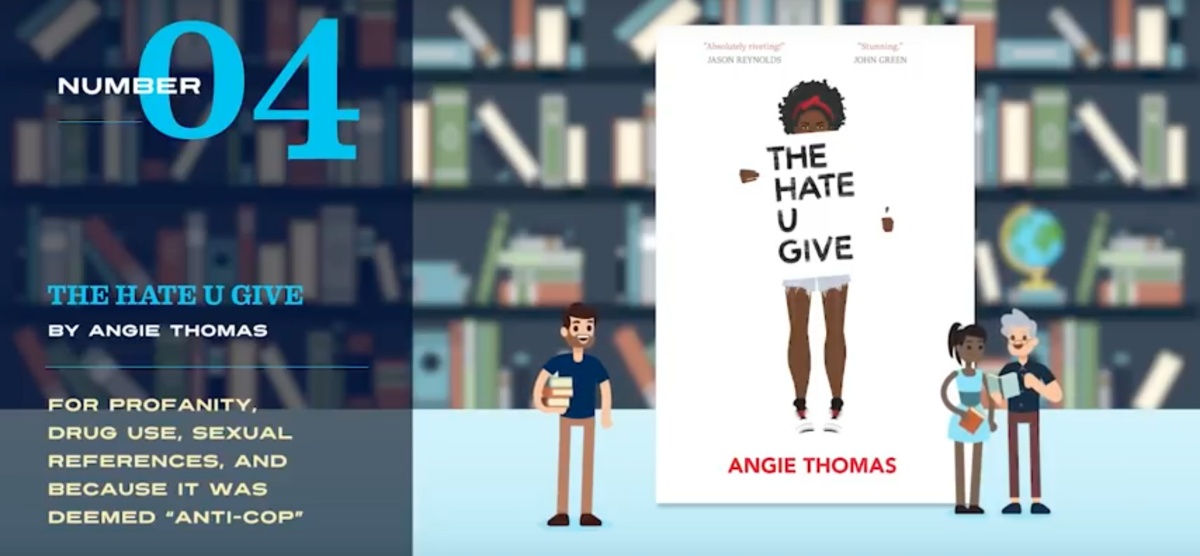What Banned Books Tell Us About Literary Canon

Sunday was the beginning of banned book week, a time to reflect and celebrate some of the books in the modern Western literary canon that most often receive formally filed challenges to have them removed from schools or public libraries.
The first “banned book” I picked up on my own, because it was banned, was Lady Chatterley’s Lover, by English author D.H. Lawrence. I’d heard about the R v Penguin Books Ltd trial, which was the U.K. public prosecution of Penguin Books, under the Obscene Publications Act 1959, for the publication of Lady Chatterley’s Lover. Penguin Books came out the winner, and the title was allowed to get an uncensored release in the United Kingdom for the first time in 1960, a little over thirty years from the original private publication and long after Lawrence’s death.
Now, I thought that a novel so vulgar, so risqué that people had to go to court over it would completely blow my mind. Sadly, by the time I read it, I’d already been digesting a steady diet of smutty Zutara fanfiction and Anne Rice’s Sleeping Beauty trilogy, so I wasn’t scandalized by it. What I did notice was beautiful about the book was how Lawrence really focused on the main heroine, Constance Reid, and her search for wholeness of self—not to mention it was a story where an upper-class woman sleeps with a working-class man, which scandalized the readership equally as the scene where they braid flowers into each other’s pubic hair.
What you learn when looking at banned books lists is that it’s more about control than actually “protecting” people from anything. Even if you take a look at the 2018 most challenged books from the ALA website, most of the books that have been challenged have to do with sexuality, race, and LGBTQ+ content. Of the 483 books challenged or banned in 2018, the Top 11 Most Challenged Books are:
George by Alex Gino
Reasons: banned, challenged, and relocated because it was believed to encourage children to clear browser history and change their bodies using hormones, and for mentioning “dirty magazines,” describing male anatomy, “creating confusion,” and including a transgender characterA Day in the Life of Marlon Bundo by Jill Twiss, illustrated by EG Keller
Reasons: banned and challenged for including LGBTQIA+ content, and for political and religious viewpointsCaptain Underpants series written and illustrated by Dav Pilkey
Reasons: series was challenged because it was perceived as encouraging disruptive behavior, while Captain Underpants and the Sensational Saga of Sir Stinks-A-Lot was challenged for including a same-sex coupleThe Hate U Give by Angie Thomas
Reasons: banned and challenged because it was deemed “anti-cop,” and for profanity, drug use, and sexual referencesDrama written and illustrated by Raina Telgemeier
Reasons: banned and challenged for including LGBTQIA+ characters and themesThirteen Reasons Why by Jay Asher
Reasons: banned, challenged, and restricted for addressing teen suicideThis One Summer by Mariko Tamaki, illustrated by Jillian Tamaki
Reasons: banned and challenged for profanity, sexual references, and certain illustrationsSkippyjon Jones series written and illustrated by Judy Schachner
Reason: challenged for depicting stereotypes of Mexican cultureThe Absolutely True Diary of a Part-Time Indian by Sherman Alexie
Reasons: banned and challenged for sexual references, profanity, violence, gambling, and underage drinking, and for its religious viewpointThis Day in June by Gayle E. Pitman, illustrated by Kristyna Litten
Reason: challenged and burned for including LGBTQIA+ contentTwo Boys Kissing by David Levithan
Reason: challenged and burned for including LGBTQIA+ content
A lot of these books aren’t even new. Two Boys Kissing, Part-Time Indian, and George are several years old, but … haters gonna stay mad. If you take a look at the most banned books, they’re titles that I truly do not like: The Great Gatsby, by F. Scott Fitzgerald; The Catcher in the Rye, by JD Salinger; and Lolita, by Vladimir Nabokov, to name a few. Yet, I don’t think any book should be banned.
I think even racist books should be used as teaching tools and a way to show young people how language evolves and how art has always been used to go with the flow of progress, or to go against it. I may never want to ever see a copy of The Scarlet Letter for as long as I live, but banning it accomplishes nothing. People use banning as a way to escape having difficult conversations about important books, and as an English major, and just someone who loves books, I think that is the worst approach to a complex issue.
The beauty of literary canon is that it is ever-evolving, that it can highlight the treads in certain periods of time. Show us what was common, how literature was constructed, and what ideas were still new once upon a time. It also shows us that a lot of the important books (subjective feelings withstanding) are ones with something to say. Just because classics have a seal of approval from the ivory tower, doesn’t mean they are passive. Even in books, I’ve hated there has been something I’ve gained out of reading it—if only to complain.
What is your favorite banned book?
(via CNN, image: Screengrab)
Want more stories like this? Become a subscriber and support the site!
—The Mary Sue has a strict comment policy that forbids, but is not limited to, personal insults toward anyone, hate speech, and trolling.—
Have a tip we should know? tips@themarysue.com